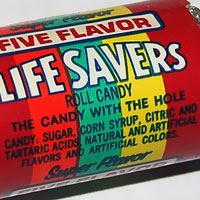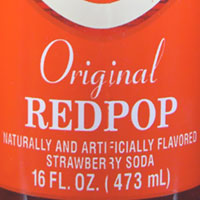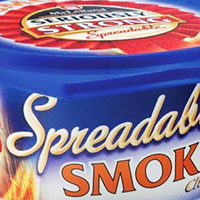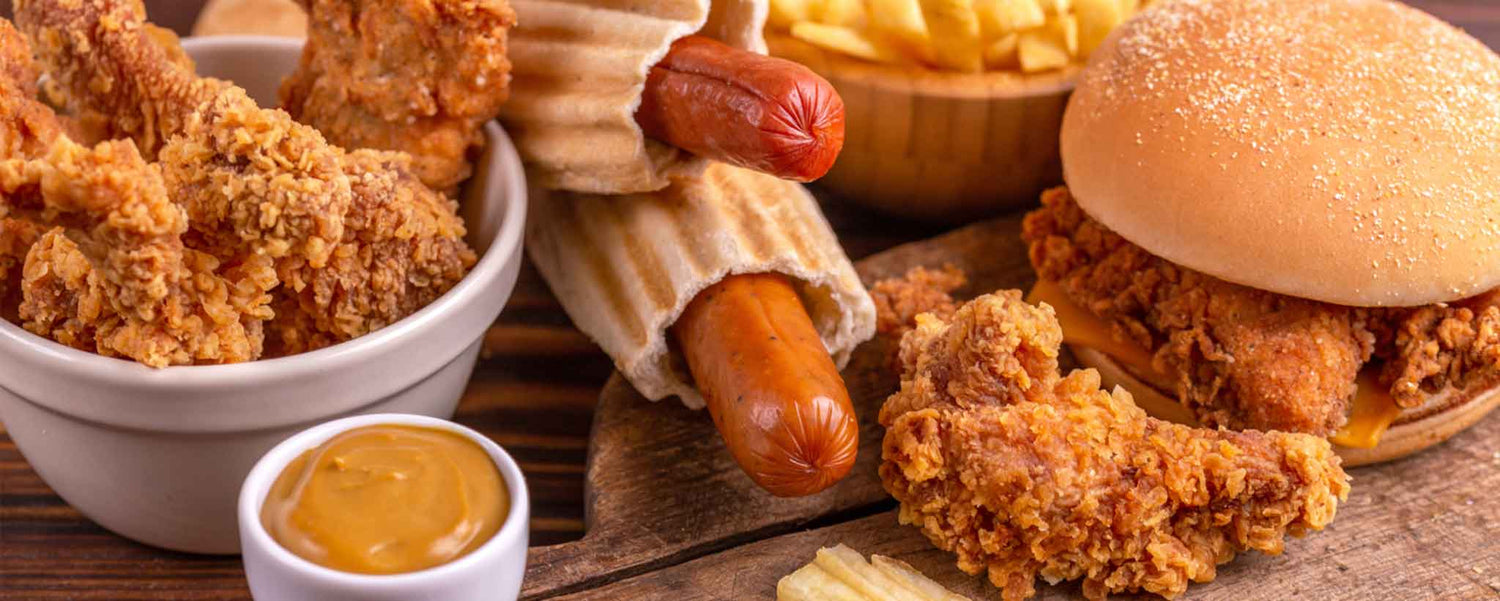It is quite difficult in today’s industrialized society to eliminate all processed food.
Attempt To Escape Processed Foods
Processed foods are those that have been altered from their natural state. Without food processing, supermarkets would either be much smaller or have massive produce sections with very few boxed and canned goods. Most people eat processed bread or breakfast cereals, but not unprocessed grains like wheat, bran, or uncracked nuts. They do not mill their own corn, nor churn butter.

Food processing allows consumers to have year-round availability of foodstuffs that have limited growing seasons. Frozen vegetables are usually processed within hours of harvest with little nutrient loss in the freezing process.
In contrast, by the time fresh vegetables are picked and transported to market, many vitamins are gradually lost. Then there’s the convenience factor. Dried noodles, a bag of rice, or a jar of pasta sauce make a quick and easy dinner after a long day at work.
In a warehouse setting, apples sprayed with chemicals often sit for at least 9 to 12 months. —9 Surprising Things You NEED To Know About Supermarket Produce Before Buying
Does it seem like I am trying to convince you to stock up on chocolate-covered pretzels and squeeze cheese? Registered dietitians and health-conscious consumers would not approve. Most of the processed food benefits mentioned are published by The European Food Information Council. [1]
The point is that it is quite difficult in today’s industrialized society to eliminate all processed food. Even if we strive to eat fresh organic vegetables from local farmers’ markets, some portion of our balanced meal—olive oil, butter, bread, rice, seasoning—may come from a food processing plant. So likely, governed by our consciences, we make reasonable concessions when shopping for healthy foods. Some processed foods even have “organic” or “natural” on the label.
The Great Consumer Deception

Food manufacturers are aware of consumers’ growing desire to eat healthier, whole foods. In response to people clamoring for nutrition, companies have introduced many product packaging methods that fool unwary shoppers into thinking they are purchasing healthy foods.
Is the word “healthy” or “natural” prominently displayed? Closely examine the nutritional label. Does the package tout “low sodium?” Read the ingredient list more carefully.
One beverage prominently displays “100% Apple Juice” on the front label. Just below, it reads: “Frozen concentrate juice with added ingredients.” Isn’t that an oxymoron? If something is packaged “organic,” is it all right if it is also fortified with vitamins? This makes the fundamental question more difficult:
How do you recognize processed foods? If you can’t identify them, it is hard to cut processed foods out of your diet. [2] Here is a list of individual food package claims ranging from obvious to deceptive (sort by the last column if desired):
| Image | Claim | What It Often Means | Apparent? |
|---|---|---|---|
 | Artificial Colors | Chemical food colors are mixed in a laboratory. Usually, the bright colors give away the presence of food coloring and dyes. | Obvious |
 | Artificial Flavors | High-fructose corn syrup, salt, and other chemicals. | Subtle |
 | Candy | By itself, candy is processed. Popular candy brands may also be merged with a dessert, such as ice cream. Many candies claim fruit flavors. They are not fresh fruit, no matter the flavor. | Obvious |
 | Drink | A fruit “drink,” as opposed to “juice,” has very little, if any, real fruit juice. Often, it is comprised of high-fructose corn syrup and artificial colors. | Subtle |
 | Energy | Usually paired with “drink,” it includes caffeine, an addictive drug, as an active ingredient along with other additives like sodium and taurine. | Subtle |
 | Enriched | When a food such as flour is processed, vitamins and minerals are lost. Enriching the flour adds the vitamins back in, but their whole-grain counterparts are much healthier. | Subtle |
 | Fortified | Vitamins or nutrients are added. This may be desirable, depending upon what is being fortified. In place of the word “fortified,” various vitamins may be featured. | Subtle |
 | From Concentrate | Juice has had most moisture removed before freezing to preserve shelf-life, limit the amount of storage space required, and control the quantity of water added to reconstitute it. | Subtle |
 | Fresh | Fresh doesn’t mean “just prepared” in most situations. It can also mean frozen, or it can be part of a branded name. | Deceptive |
 | Instant | Frequently used for hot cereals, the product is freeze-dried and mixed with animal stomach enzymes reactivated by water, effectively pre-digesting the food while it cooks. | Subtle |
 | Low Sodium | Often, a reduction of sodium is offset by an increase in sweeteners, fat, and calories to compensate for a more bland flavor. | Deceptive |
 | Made With Real Fruit | With no law that requires how much real fruit has to be included in a food that uses this claim, often the amount is negligible. Fruit should be near the beginning of the ingredient list. | Deceptive |
 | Microwavable | Generally high-sodium, frozen food with preservatives, often in plastic containers that are rarely recycled. | Obvious |
 | Natural | This word is unregulated by the FDA. In its unrefined state, the processed food may have been natural. | Deceptive |
 | Natural and Artificial Flavors | Usually, emphasis is placed on the word “natural,” but the content is mostly artificial; often, less than 15 percent natural flavors, sometimes way less. | Subtle |
 | No Refrigeration Required | Preservatives are added to retard spoilage of normally perishable foodstuffs. Examples could be coffee creamer or cheese. | Obvious |
 | Preformed Shapes | Whether they are neatly shaped wedges, tubes, dinosaurs, wafers, chips, or patties, they did not grow from the ground or come from an animal in that form. | Obvious |
 | Pulp Added or Extra Pulp | Ever wonder where all the extra pulp comes from and why it tastes so odd? It is reconstituted from the freeze-dried pulp of pulp-free juices. | Subtle |
 | Squeezable | Squeezable versions of fruits, nuts, cheeses, chocolate, or invented flavors are processed with stabilizers and homogenizers. Look for high-fructose corn syrup. | Subtle |
 | Spreadable | Prominently featured on foods generally thought to be solid. Maintaining spreadable consistency often requires chemical homogenizers and stabilizers. | Subtle |
 | Sugarless or Sugarfree | A sugar substitute is usually added. Read the label for saccharin, stevia, or high-fructose corn syrup. | Subtle |
 | Whole Grains | “Whole Grains” is not the same as 100% whole grain. A product like white bread originated from whole grains before nutrient-stripping processing. It may then be enriched. | Deceptive |
Since the word “natural” is not regulated by the FDA, natural potato chips may use real potatoes (instead of flakes), for example, but like regular potato chips, they are still a simple-carbohydrate food choice with little nutritional content.
Natural candy may be sweetened with cane juice (instead of white sugar), but it can still contribute to weight gain when eaten in excess. Basically, “natural” means whatever the food manufacturers say. [3]

Processed foods are also made to dissolve quickly in your mouth, getting you to eat faster and in greater quantities—often leaving you full, but not satisfied. There’s another danger in feeding children artificially flavored food. Their perception of whole food is altered. A craving for watermelon or cherry-flavored candy may not be quenched by corresponding fresh fruit that, by comparison, tastes less sweet.
What would you consider to be the four most harmful processed food additives? According to Reader’s Digest, they are: trans fats, refined grains, salt, and high-fructose corn syrup. [4]
Packages that are legally required to display nutritional information can also vary the serving size to an uncommon proportion. This makes direct comparisons more difficult.
Rather than offer nutritional information for a small bag of chips, statistics for a portion of a bag or half a muffin may be listed—even though most consumers are likely to eat an entire bag or a full muffin.
Where Processed Foods Get Flavor
 Processed food coloring and flavoring are often considered proprietary trade secrets. There are some 500 scientists in the world identified as flavorists making laboratory concoctions said to account for 90 percent of items bagged and toted home from U.S. grocery stores.
Processed food coloring and flavoring are often considered proprietary trade secrets. There are some 500 scientists in the world identified as flavorists making laboratory concoctions said to account for 90 percent of items bagged and toted home from U.S. grocery stores.
Before any flavor can be blended, spray-dried, stuffed into a carbohydrate shell, or otherwise altered, though, its chemicals have to be approved by the Flavor Extract Manufacturers Association in Washington, D.C. [5]
Food processors reap significant profits from turning government-subsidized commodity crops—mainly corn, wheat, and soybeans—into fast foods, snack foods, and beverages. High-profit products derived from these commodity crops are generally high in calories and low in nutritional value. [6]
Vanilla flavoring—also called imitation vanilla—is not the same as vanilla extract. It's made with synthetic vanillin, which food companies sometimes make from a secretion from the anal glands of beavers. —MedMD
How to Wean Yourself Off Junk Foods
Take pleasure in whole foods. Smell the aroma. Chew them well. Mentally describe and visualize the flavors. “Every bite should be like a wine tasting,” says food writer and chef Bruce Weinstein. “The more you take away from your food, the more pleasure you’ll feel eating it.” [7] Here are some abbreviated suggestions from the book, Real Food Has Curves, co-authored by Weinstein:
- Seek true satisfaction from natural flavors.
- Read labels wisely.
- Relish what’s on your plate without distractions.
- Give your palate time to change.
- Give preference to high-quality foods.
- Don’t skip meals.
A company called Apeel Sciences is providing a chemical-free spray to dramatically extend the life and freshness of produce. [8] With a balanced view of food manufacturing, careful reading of product labels, and a preference for organically grown whole foods, we can consume more nutrition, lessen our health problems, and feel better. How will this information help you? Have you been motivated to eat healthier? Let me know in the comments below.
To support the writing of useful articles about food, ClinicalPosters sells human anatomy charts, scientific posters, and other products online. You may sponsor specific articles, become a ClinicalNovellas Member, or remit a small donation.
ClinicalPosters sells human anatomy charts, scientific posters, and other products online to offset expense of the writing useful articles about food. Slide extra posters into DeuPair Frames without removing from the wall.
Show your support by donating, shopping for ClinicalPins, becoming a ClinicalNovellas Member, or leaving an encouraging comment to keep the research going.
To support the writing of useful articles about food, ClinicalPosters sells human anatomy charts, scientific posters, and other products online. You may sponsor specific articles or remit a small donation.
ClinicalPosters sells human anatomy charts, scientific posters, and other products online to offset expense of the writing useful articles about food. Slide extra posters into DeuPair Frames without removing from the wall.
ClinicalPosters sells human anatomy charts, scientific posters, and other products online. You may remit a small donation or become a ClinicalNovellas Member.
You can support the writing of useful articles about food by sponsoring specific articles, becoming a ClinicalNovellas Member, or remitting a small donation. Visible content is optimized for device size.
References
- Myths & Facts about Processed Foods. eufic.orgorg/en/ Retrieved 29 Oct 2019
- How To Choose Processed Foods To Fit Within A Healthy Eating Plan. summitmedicalgroup.com Retrieved 29 Oct 2019
- What about that pesky “natural” on food labels? foodpolitics.com/2012/03/what-about-that-pesky-natural-on-food-labels-2/ Retrieved 29 Oct 2019
- The Tastemakers. njmonthly.com/articles/restaurants/the-tastemakers.html Retrieved 29 Oct 2019
- 4 Most Harmful Ingredients in Packaged Foods. thehealthy.com/nutrition/4-most-harmful-ingredients-in-packaged-foods/ Retrieved 29 Oct 2019
- 10 Things the Food Industry Doesn’t Want You to Know. usnews.com/health-news/articles/2012/03/30/things-the-food-industry-doesnt-want-you-to-know Retrieved 29 Oct 2019
- Wean Yourself Off Processed Foods in 7 Steps. usnews.com/health-news/diet-fitness/diabetes/articles/2010/06/04/wean-yourself-off-processed-foods-in-7-steps Retrieved 29 Oct 2019
- This simple step can double the shelf life of fruits and vegetables. cnn.com/2018/10/23/tech/apeel/index.html Retrieved 29 Oct 2019
- Apeel Sciences. apeelsciences.com Retrieved 29 Oct 2019
- Dishaka LLC. dishaka.com






 Romance & Health Intertwine. Fall in love with a captivating romance miniseries that explores the essence of well-being. Become a ClinicalNovellas member for heartwarming tales.
Romance & Health Intertwine. Fall in love with a captivating romance miniseries that explores the essence of well-being. Become a ClinicalNovellas member for heartwarming tales.





